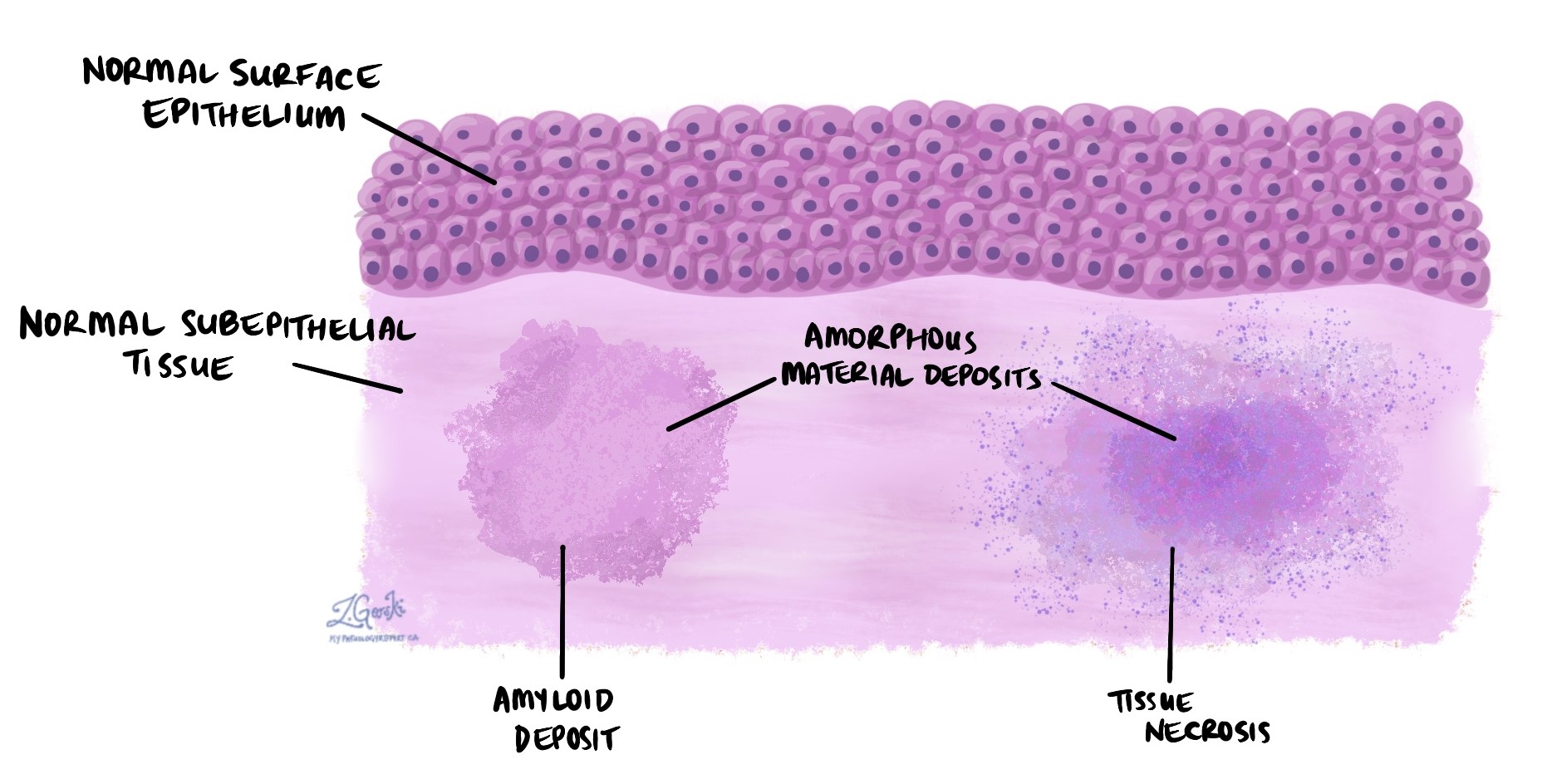
In pathology, the term “amorphous” describes the appearance of material or tissue that lacks a defined shape or structure when viewed under a microscope. This term is used to characterize substances or cellular debris that do not have a recognizable cellular or tissue architecture, appearing as shapeless, unstructured masses. Amorphous material can be found in various pathological conditions, including areas of necrosis (tissue death), deposits of certain substances (like amyloid in amyloidosis), or in the background of tumours where cellular or extracellular components fail to form distinct patterns.
Amorphous materials might be stained with various dyes, such as Congo Red, to help identify their nature and origin, but they remain characteristically without any specific form or organization. Identifying amorphous substances can provide important diagnostic clues in understanding the nature of a disease process or the effects of certain conditions on tissue architecture.
About this article
Doctors wrote this article to help you read and understand your pathology report. Contact us if you have questions about this article or your pathology report. For a complete introduction to your pathology report, read this article.

